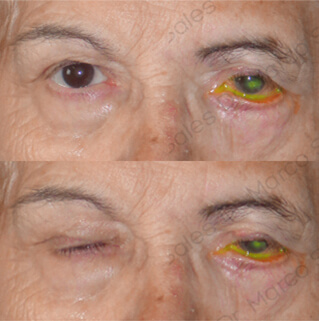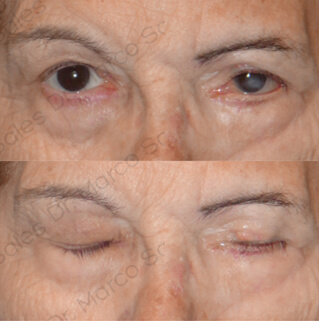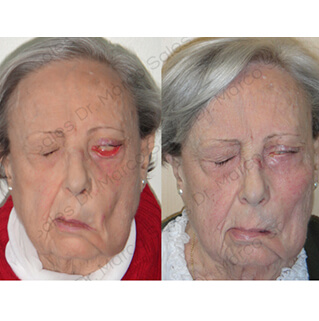Facial paralysis of the eyelids basically produces two alterations: lagophthalmos or lack of eye closure, and paralytic ectropion or drooping of the lower eyelid due to lack of muscle tone.
Complete closure of the eyelids is essential to keep the eye moist, both during the day and during sleep. If the eyelids do not close completely, the exposed area can dry out, resulting in a red eye, discomfort with a gritty or painful sensation, and in severe cases the wounds can become infected, leading to serious ocular complications. Lagophthalmos from facial paralysis is initially treated with tears and lubricating ointments. In cases where these are not sufficient and wounds appear on the cornea despite their use, a gold weight can be placed inside the upper eyelid to facilitate closure.
Paralytic ectropion occurs when the orbicularis oculi muscle loses its tone. It causes the eye to be constantly irritated and tearing. It is usually treated with surgery, generally requiring effective tightening of the eyelid, and usually associated with a cheek lift (midface lift) to reduce the downward pull on the paralysed cheek, and the use of grafts (usually ear cartilage) to give more stability to the eyelid. Correcting ectropion in facial paralysis usually also improves lagophthalmos, as we elevate the lower eyelid. This type of “static” eyelid surgery (function is not recovered, only better positioning) is usually performed when spontaneous recovery or other “dynamic” surgeries (those that attempt to recover muscle function) have already been ruled out. They are generally performed under local anaesthesia and without hospitalisation.





